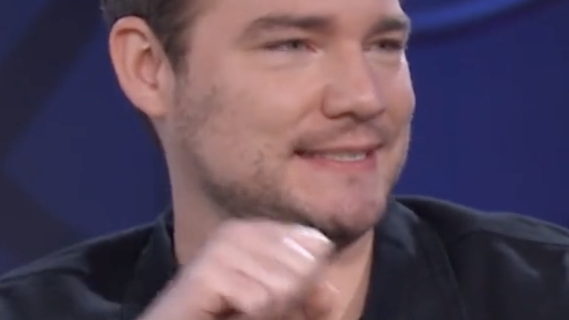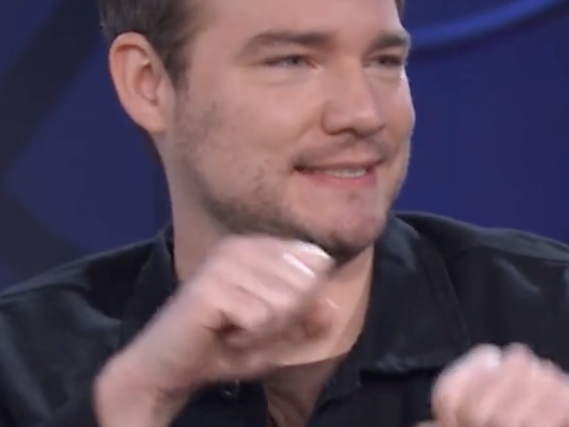Actor Daniel Durant, appearing on the Kelly Clarkson Show, describes how he enjoyed radio as a child by feeling vibrations from a car’s sound system turned up all the way.
screenshot from Kelly Clarkson Show
hide caption
toggle caption
screenshot from Kelly Clarkson Show
Actor Daniel Durant, appearing on the Kelly Clarkson Show, describes how he enjoyed radio as a child by feeling vibrations from a car’s sound system turned up all the way.
screenshot from Kelly Clarkson Show
In the movie CODA, which is up for best picture at this year’s Academy Awards, the father of the family, who is deaf, likes to listen to loud hip hop in his car. He bumps up the sound to feel the beats vibrating through his body.
One of the film’s costars, Daniel Durant, who plays the brother of the main character, has a similar affinity.
“I’m fully deaf. I can’t hear anything at all but I love feeling the vibration through my body,” he explained on the Kelly Clarkson Show, while promoting CODA.
Using American Sign Language, he said he learned to listen to music as a child on long car rides traveling for his soccer games. “Sometimes I’d ask my mom, ‘Can you turn it up so I can feel the bass?’ And my mom was like, ‘Yeah,’ but we struggled to hear it. So my mom went ahead and bought a new sound system, and I loved it. You could feel the bass. It was so strong. The windows were shaking. It felt so good.”
One day, he stayed in the car while his mother went into a store. He cranked up the new sound system and started dancing in his seat. “I loved it. I could feel the car shaking. I was having so much fun.” he said. A stranger drove by and rolled down his window to look at him.
“I was just imagining he must be like, ‘Wow, you have such a nice system, playing a great song.’ And I was like, ‘Yeah.’ And I started dancing to him and another person pulled up. It was a woman, same thing. I pointed at her and kept dancing.”
When his mother came out of the store, he asked her what song it was.
“She started laughing,” he recalled. “You’re listening to NPR talk radio.”
Durant didn’t say exactly which program or segment he was jamming to.
“There is a rhythmic aspect to speaking. Our voices are filled with varied inflections and vocalizations,” says Jessica Allison Holmes, an assistant professor of musicology at the University of Copenhagen. “With the right speaker system in your car, some booming voice could come through and you could feel it. Sure, you could rock out to the news.”
Holmes is writing a book on music and deafness, and says people who are deaf offer a far more reaching conception of music than hearing people do. “Deafness is a diverse ideological, physiological and cultural and linguistic experience,” she says. “No two deaf experiences of music are alike.”
In her research, she’s found that many people who are deaf have developed a very sophisticated conception of sound that is multi-sensory. “Certainly rhythm and vibration are very important, but visual cues are equally important,” she says. Case in point: Holmes’ uncle, who is profoundly deaf, likes to go to the opera, where he can experience the emotional trajectory on the singers’ faces. “But he also says if the music isn’t loud enough or percussive enough, he’s not interested.”
Electronic dance music and death metal are popular among some people who are deaf, she says, pointing to a nonprofit music collective in the U.K. called Deaf Rave, which hosts Def Leppard music festivals in venues with state-of-the-art sound systems and subwoofers to optimize the bass. American deaf culture has a strong tradition of what’s known as “song singing,” using ASL alongside singers like Eminem or Meghan Thee Stallion at concerts. “They’re not seeking to sort of provide a one-to-one translation of the music or the lyrics, ” she says. “The signs become their own form of visual spatial music that can oftentimes work independently.”










More News
Wild Card: Chris Pine
Sean Combs apologizes for ‘my actions in that video’ that appeared to show an assault
Hold on to your wishes — there’s a ‘Spider in the Well’